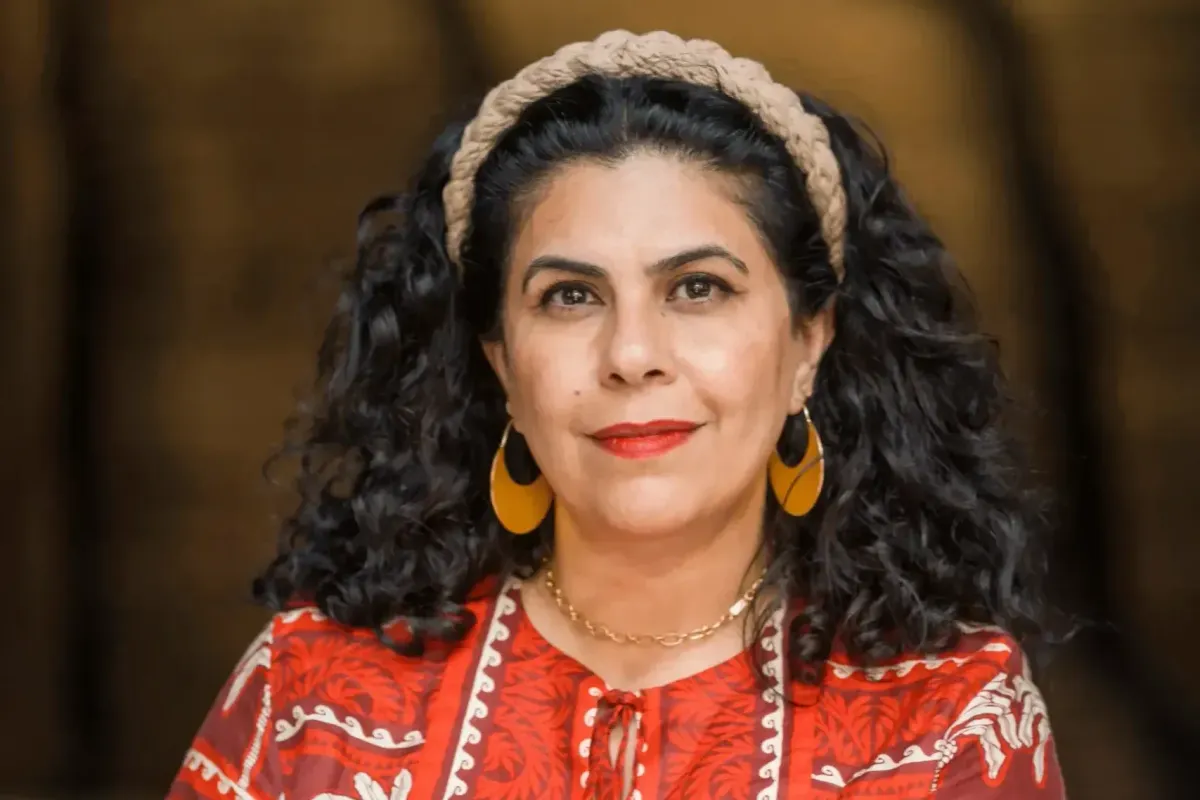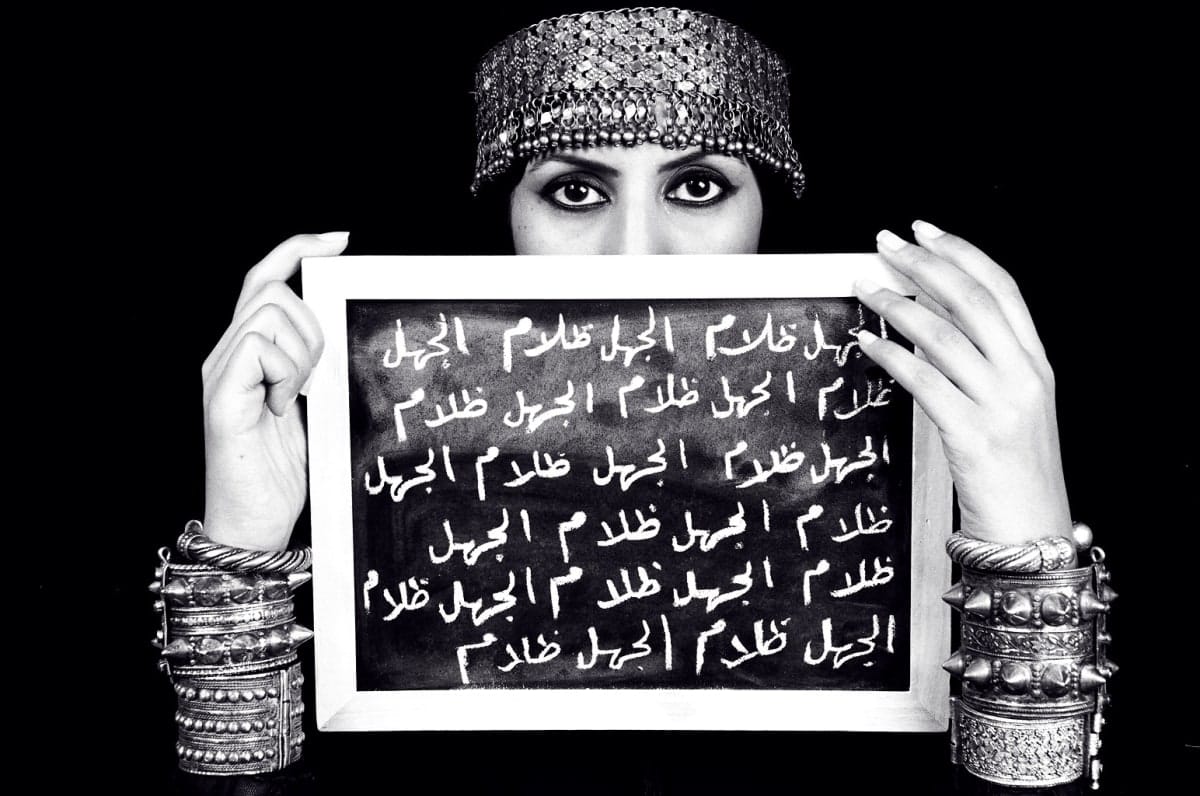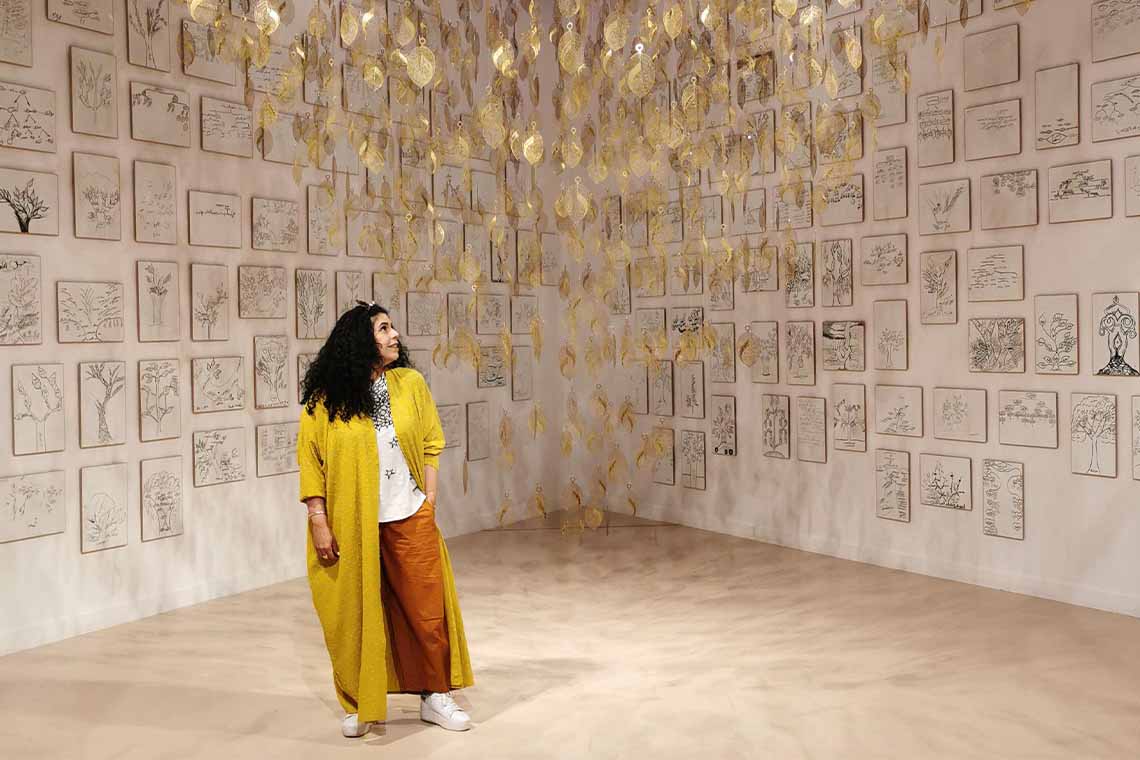

Manal Al Dowayan, a pioneering Saudi contemporary artist, stands at the intersection of art, identity, and cultural transformation. Through her evocative works, she sheds light on pressing societal themes, from the evolving roles of women to the preservation of traditional practices and language. Her art is not just a medium for expression but a platform for dialogue, challenging viewers to re-examine cultural norms and histories.
Exploring Women’s Roles in Society
At the heart of Al Dowayan’s oeuvre lies her commitment to examining the lives of Saudi women. Her early works, such as the photographic series “I Am,” initiated in the mid-2000s, spotlighted professional women in Saudi Arabia, a group often overlooked in public narratives. This series emerged against the backdrop of King Abdullah’s progressive yet cautious rhetoric about women’s participation in the workforce.
In her interview, Al Dowayan recalls how, in 2005, only 3% of Saudi women were employed despite 60% holding higher education degrees. The disconnect between education and employment inspired her to ask: Who decides what suits a woman’s nature? This question became the foundation of her collaborative portraits, which celebrated women who had already broken societal barriers.

One poignant image features a university professor holding a chalkboard inscribed with the phrase “Ignorance is Darkness,” repeated endlessly. This work encapsulates Al Dowayan’s belief in the power of education and self-definition, while also critiquing the systemic challenges women face.

Reviving Cultural Practices Through Participatory Art
Al Dowayan’s artistic journey extends beyond critique to preservation and celebration of cultural heritage. One of her notable projects involved Sadu weaving, a traditional Bedouin craft used to create the tents, walls, and floors of nomadic communities. Recognized by UNESCO as a protected heritage, Sadu weaving has long been a cornerstone of Bedouin identity, performed by women who sat at the center of their communities.
In her interview, Al Dowayan recounts how modernization and the discovery of oil marginalized these women, pushing them from the heart of their societies to the sidelines. Through her art, she reclaims their narratives, working directly with craftswomen to create installations that honor their skills and histories. Her pieces, deeply rooted in collaboration, underscore the resilience of these women as custodians of cultural memory and identity.

The Power of Language in Art
Language is a recurring theme in Al Dowayan’s work, reflecting her fascination with its complexity and cultural significance. She often incorporates Arabic text into her installations, blending visual and linguistic elements to create layered meanings.
One of her pieces, “I Need Pause to Choose What Path to Take,” exemplifies her belief in the transformative power of the written word. The LED installation invites viewers to engage actively with the text, translating and interpreting it within their own contexts. For Al Dowayan, this interaction transforms audiences from passive recipients to active contributors, making the artwork a shared experience.
Her research into the Arabic language revealed a tension between its perceived permanence and the reality of linguistic evolution. While Arabic is often considered immutable due to its connection to the Quran, Al Dowayan discovered that many words have fallen into disuse. “Things that stay alive are things that are used,” she notes, emphasizing the importance of practice over preservation. This insight shapes her approach to language in art, where each word becomes a vessel for both history and reinvention.
Love and Madness: Cultural Reflections
Al Dowayan’s exploration of cultural nuances extends to concepts like love. In one interview, she delves into the Arabic notion of “double”—a state of being so consumed by love that it borders on madness. Unlike Western perceptions, this intensity is not dismissed as frivolous but is embraced as a profound human experience. Through this lens, Al Dowayan illuminates the richness of Arabic culture, where emotions are given depth and dignity.
Engaging the Viewer as a Co-Creator
A hallmark of Al Dowayan’s work is its participatory nature. Whether through collaborative portraits, installations, or text-based art, she invites her audience to complete the narrative. This engagement transforms her art into a living dialogue, where each viewer’s interpretation adds a new layer of meaning.
Her commitment to collaboration extends beyond her audience to her subjects. Al Dowayan’s process often involves extensive dialogue with the people she portrays, ensuring that their voices and perspectives shape the final work. This approach not only democratizes art but also amplifies the stories of those who are often marginalized.
A Legacy of Cultural Preservation and Innovation
Manal Al Dowayan’s art is a testament to the power of creativity in bridging past and present, individual and collective, local and global. Her works challenge us to reconsider our assumptions, celebrate our shared humanity, and engage actively with the world around us.
By weaving together themes of gender, language, and cultural heritage, Al Dowayan creates a body of work that is as intellectually engaging as it is emotionally resonant. Her art reminds us that preservation is not just about looking back but about actively shaping the future.
Manal Al Dowayan’s journey is far from over, but her contributions to art and society have already left an indelible mark. As she continues to push boundaries and provoke thought, her work serves as a beacon for those seeking to understand and celebrate the complexities of identity and culture.

